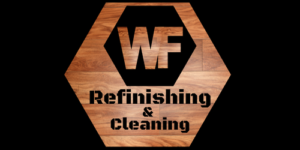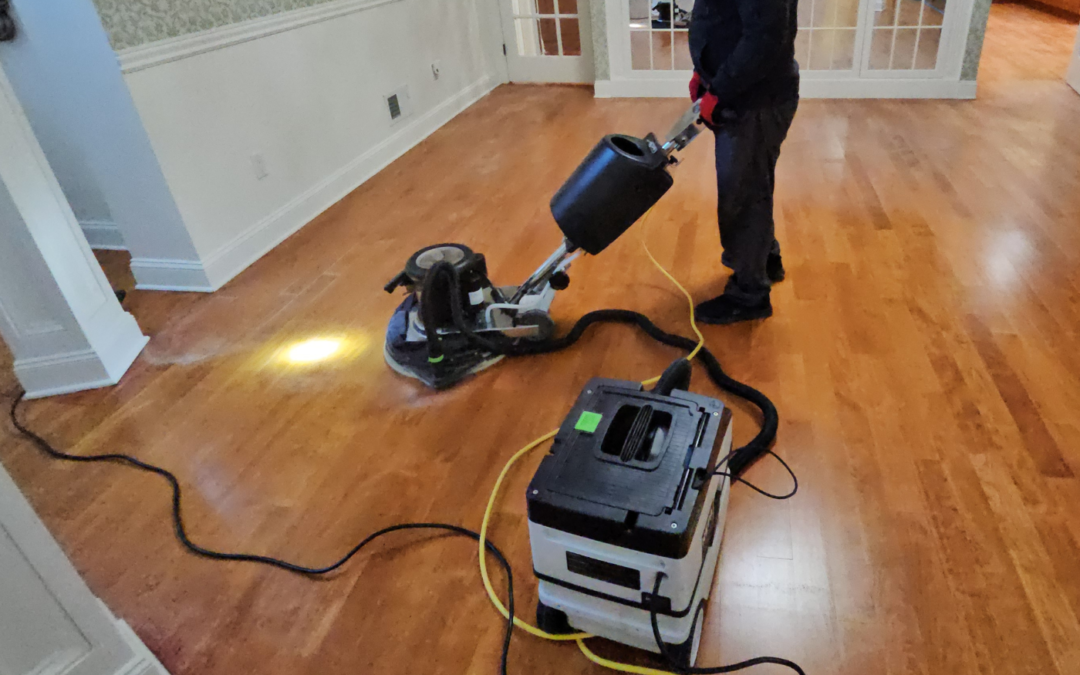Table of contents
The Importance of Screening and Recoating Hardwood Floors
Why Screen and Recoat Hardwood Floors?
Difference Between Complete Sanding and Screening Hardwood Floors:
Cost of Sanding 500 sq ft of Hardwood Floor:
General Questions
The Importance of Screening and Recoating Hardwood Floors
Hardwood floors are a timeless addition to any home, exuding warmth, elegance, and durability. However, over time, these floors may show signs of wear and tear. To maintain their beauty and extend their lifespan, two crucial processes, screening, and recoating, come into play.
Why Screen and Recoat Hardwood Floors?
Screening and recoating are essential maintenance procedures for hardwood floors. They help to refresh the surface by removing minor scratches, scuffs, and imperfections while adding a new protective layer. This process prevents deeper damage, such as wear-through or the need for complete refinishing, ultimately saving time and money in the long run.
Difference Between Complete Sanding and Screening Hardwood Floors:
Complete sanding involves stripping off the existing finish and a thin layer of the wood to address deep scratches, dents, or significant wear. It’s a more intensive process and often requires more time and money.
Screening, on the other hand, is a less invasive procedure. It involves scuffing the existing finish lightly and applying a new coat of finish on top. This method is ideal for floors with minor surface imperfections, providing a rejuvenated appearance at a fraction of the cost and time required for complete sanding.
Cost of Sanding 500 sq ft of Hardwood Floor:
The cost of sanding a 500 square foot hardwood floor may vary based on factors like the floor’s condition, the type of wood, and your location. On average, sanding 500 sq ft can range from $1,000 to $3,000, but this cost can fluctuate.
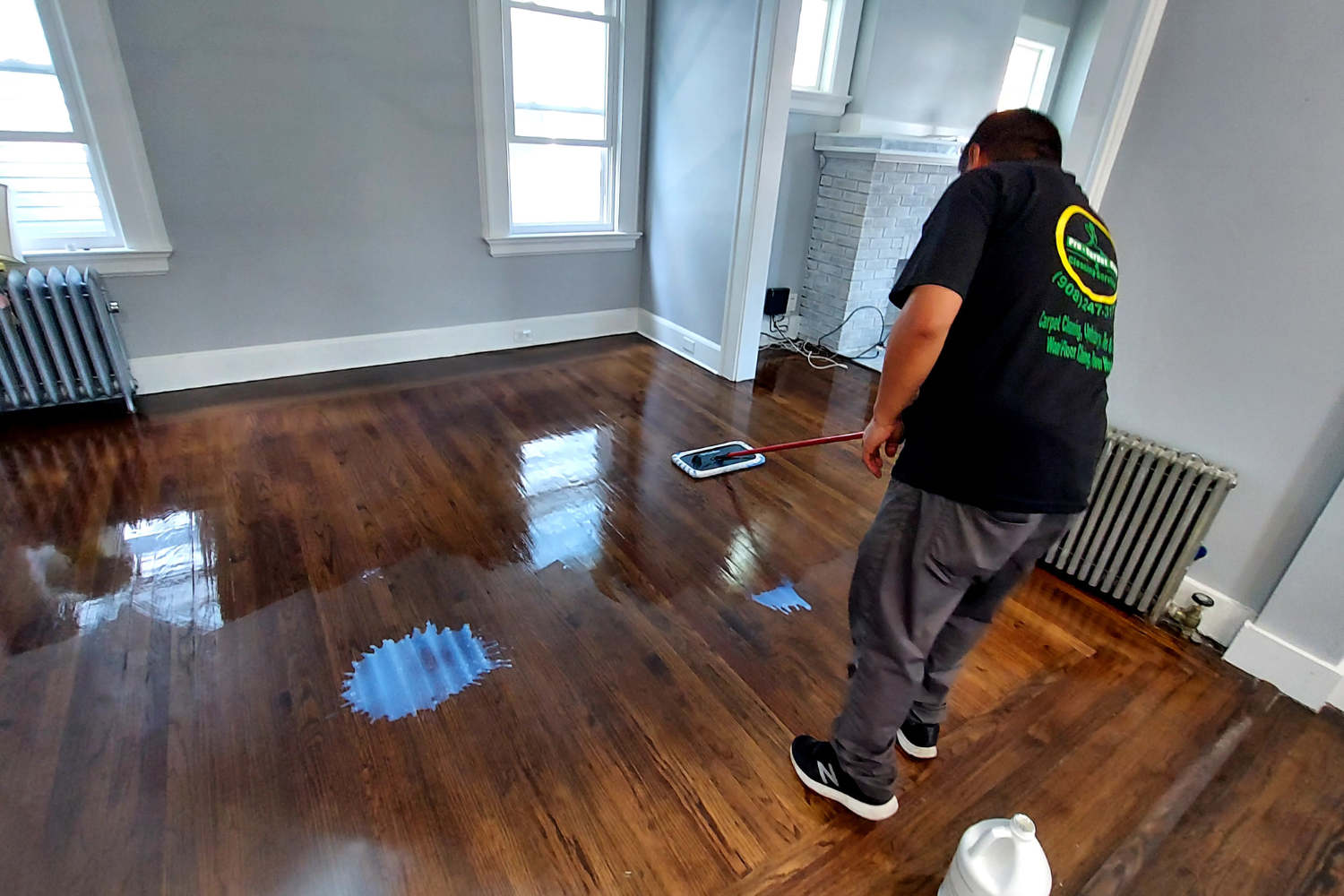
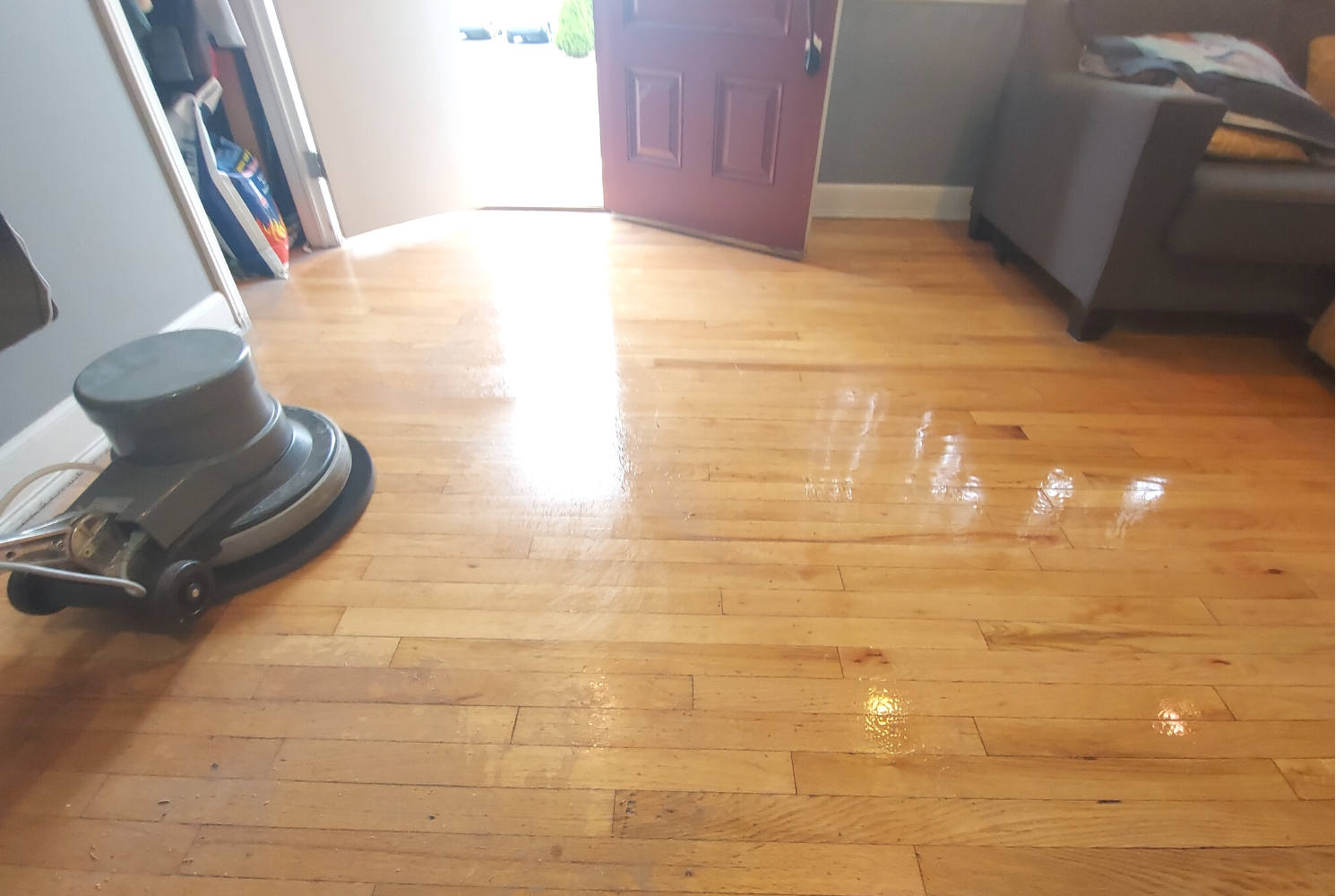
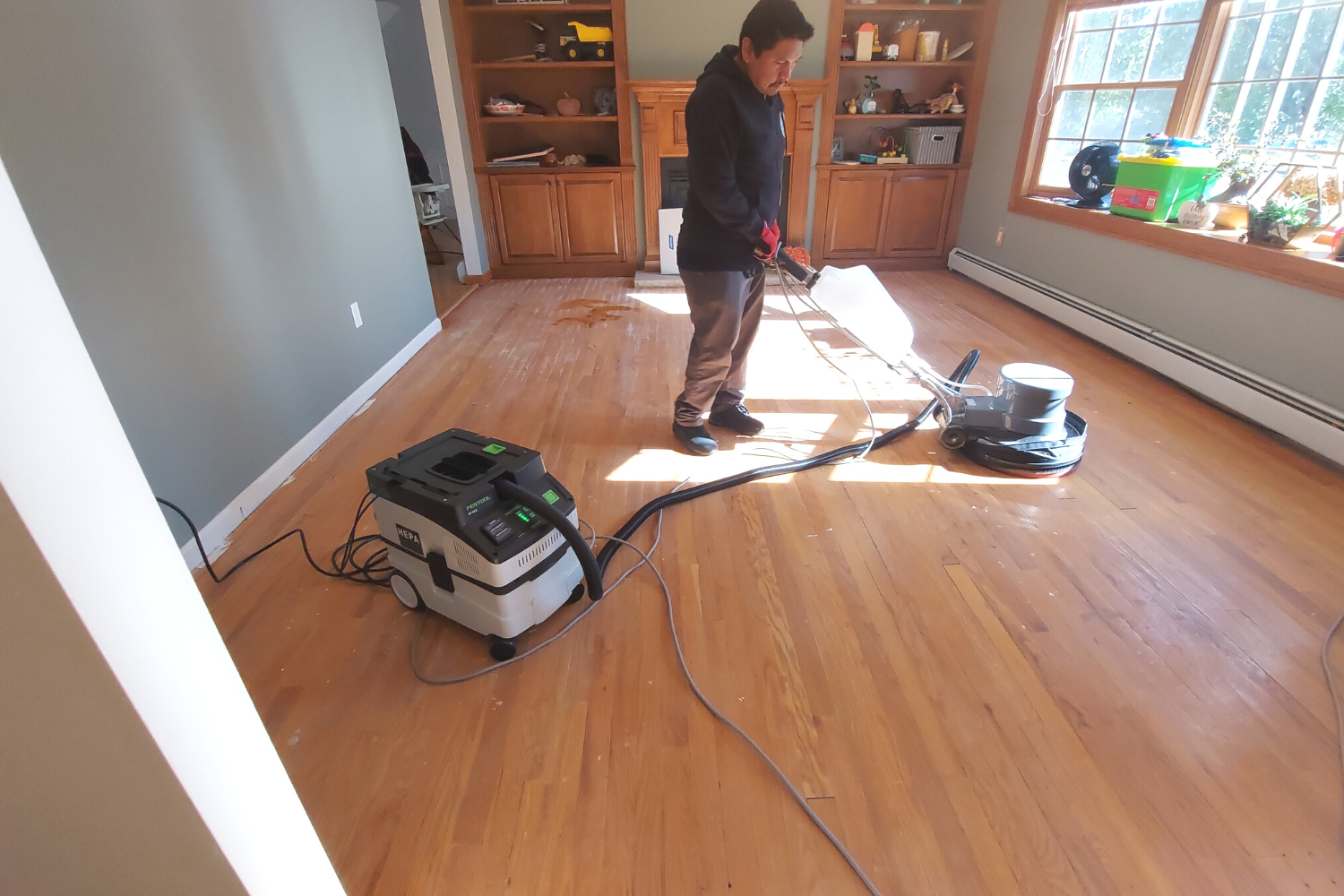
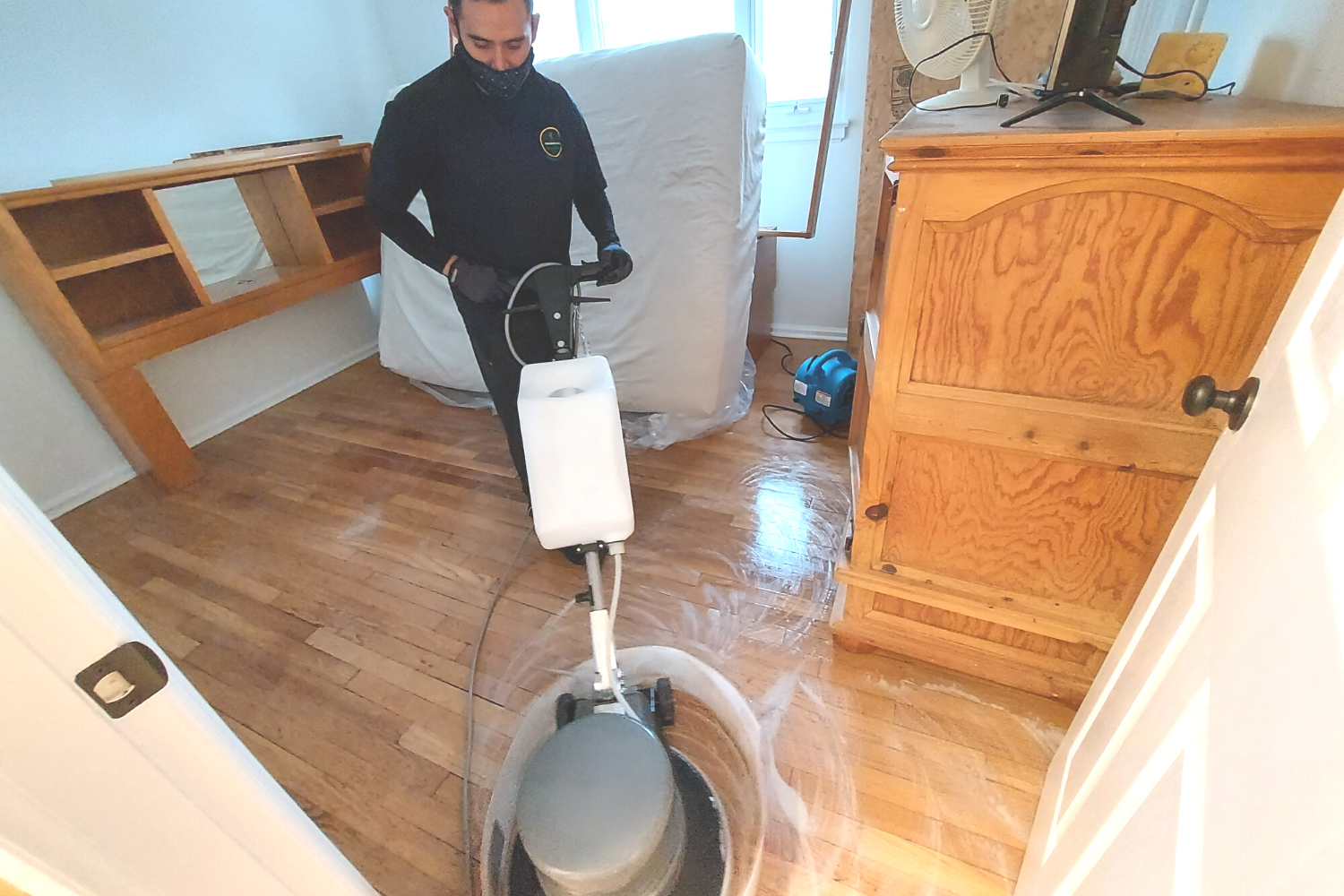
Floor Cleaning Topics:
- How to clean your sofa
- Steam Carpet Cleaning -Summit NJ
- How to dry carpet after cleaning
- How to get rid of odor in carpets
- Basement water damage -steam carpet cleaning
- Lear how to clean wood floor
- Why should i choose professional carpet cleaner
- Best Homemade carpet cleaner
Looking for a Specialist Floor Cleaning Company near you?
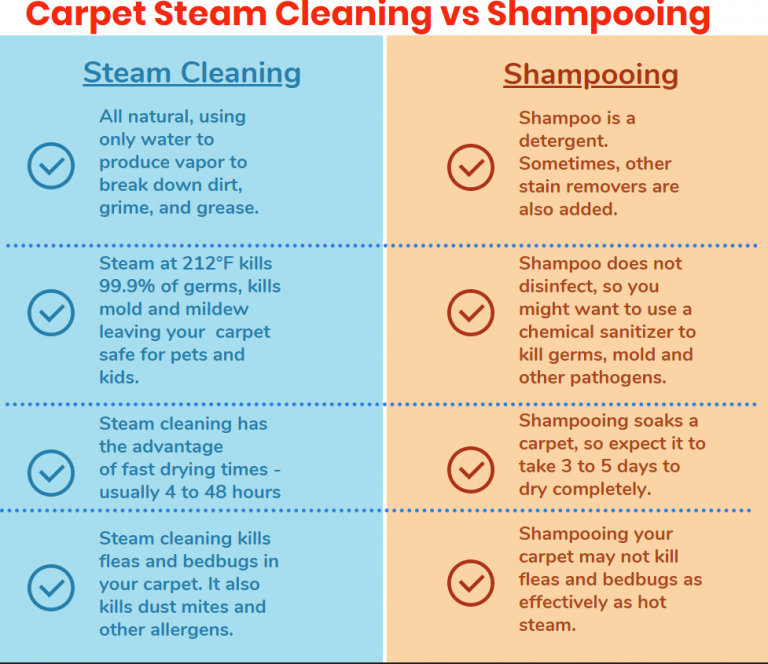
Residential Wood Floor Cleaning
Commercial Wood Floor Cleaning
General Questions
How expensive is Clean & Recoat?
Prices will vary but typically a contractor will charge you less than what they would charge you for sanding and refinishing the floor. Pricing will depend on how much time they spend cleaning a floor, the type of finish they use and the number of applications of finish they make. Get several estimates but pay careful attention to how long they will take, how they will prep the surface and the type of finish they will use.
Is this a dusty, smelly process?
The smell of the chemicals used to clean the floors is comparable to typical household cleaners and are not toxic or hazardous. The buffers we use have dust containment systems attached to vacuums to minimize any dust from prep work. We only work with waterborne urethanes that have no offensive odors. Done correctly, Clean & Recoat is the least invasive recoating process on the market today.
How log will a Clean & Recoat last?
With proper care and maintenance and by following a common sense approach to reduce wear and damage, a floor that’s been recoated can give you years of excellent service. I’ve seen floors that I recoated more than ten years ago that are still in very good shape. Most floors that are being recoated will be getting a waterborne finish and these finishes are very good and easily maintained.
What is Laminate Flooring?
Laminate flooring is a tongue and groove interlocking flooring system that comes in either planks or squares. All of these floors have a wear layer, a decorative print film layer, an inner core structure, and some type of backing support layer — usually melamine. The print film layer is either fused or glued to the inner core. The print film can be a photo of any real floor. The earlayer is applied to the decorative print layer to protect the pattern. Melamine resins are the main component of the wearlayer. The melamine surface gets its incredible durability from aluminum oxide. Aluminum oxide is almost as hard as diamonds and provides unsurpassed wear and stain resistance.
What is Engineered Flooring?
Engineered flooring is produced by bonding three or more layers of wood. The crossing of grain direction within the boards makes this a very dimensionally stable product able to resist nearly all expansion and shrinkage from normal moisture changes. This is one primary feature that makes it suitable for use directly on concrete and below-grade application.
Will my floor age or change color?
Yes. You can expect to see shade differences in your floor over time. The cause is usually from exposure to the ultra-violet rays of the sun, whether direct or indirect. This color change will be more noticeable in lighter colors, which will darken over time. In addition, certain species like Brazilian cherry, will naturally darken over the years. These changes are due to the natural characteristics of wood and are not covered by most manufacturers’ warranties.
What is Custom Finishing?
Sanding and refinishing performed to individual specifications. Custom finishing of wood floors is performed in the home on the completely installed new floor, or to refurbish a previously finished floor. Custom finishing permits the owner to select from a full range of stains, sheens and colors.
